The South African Cape offers incredible wildlife watching experiences, but it’s quite different from what many associate with safaris. This isn’t the place to see wild elephants and lions. Instead, you’ll see plenty of charismatic marine creatures, endemic species and memorable birds.
The South African Cape once was home to seemingly endless herds and large predators. European settlers landed on the Cape of Good Hope in 1650, and the Dutch established a trading post there in 1667 – beginning a wave of colonization. This had disastrous results for indigenous people and for wildlife.
By the end of the 1700s, much of the large wildlife had been killed, often viewed as competition for farmland. But the good news is that today conservation efforts have restored a number of species and protected important habitat.
Cape Town has a deserved reputation for being a lively, diverse city with both outdoor and urban activities nearby. You can also get close to whales and sharks, observe meerkats going about their daily routine and see perhaps the most unusual flora on the planet.
Here are some tips for enjoying the South African Cape’s biodiversity.
Top 10 List
-
Penguins

African penguins on Boulder’s Beach. Photo © Arjun Banerjee / TNC Photo Contest 2019 From the moment you pull into the parking area at Boulder Beach just to the south of Cape Town, penguins are impossible to miss.
You’ll first hear their strange, donkey-like braying echoing from all directions. And then they’ll appear, pretty much where you might expect: swimming in the water, standing on the beach, nesting in bushes. The whole town is a penguin zone. They’re on the sidewalk, in the parking lot and perhaps even in front of your hotel room.
Penguins, penguins, everywhere.
African penguins have been in precipitous decline due to oil spills and habitat changes. Boulder Beach is today the best place to see them, and one of the goals of the preserve is to educate people about their plight. Read more.
-
Great White Sharks

A great white shark cruising below the surface. Photo © Justin Bruhn / TNC Photo Contest 2019 Cage diving with great white sharks has become one of those adrenalin activities that people love to tick off their bucket lists. The reality is that the water is cold and you’ll probably only have a fleeting view of the shark.
There’s another option: Observe the great white sharks as they hunt near the aptly named Seal Island. From February through September, you can often have great views of sharks from the deck of a boat. I felt I had much better views from the boat, and was able to track the sharks as the searched for seals. And I saw a kill, one of the most dramatic (and goriest) predation events I’ve witnessed.
With guides who emphasize natural history instead of adrenalin, you can experience the complex ecosystem, with good views of endemic seabirds, dolphins, Cape fur seals and penguins.
-
Southern Right Whales
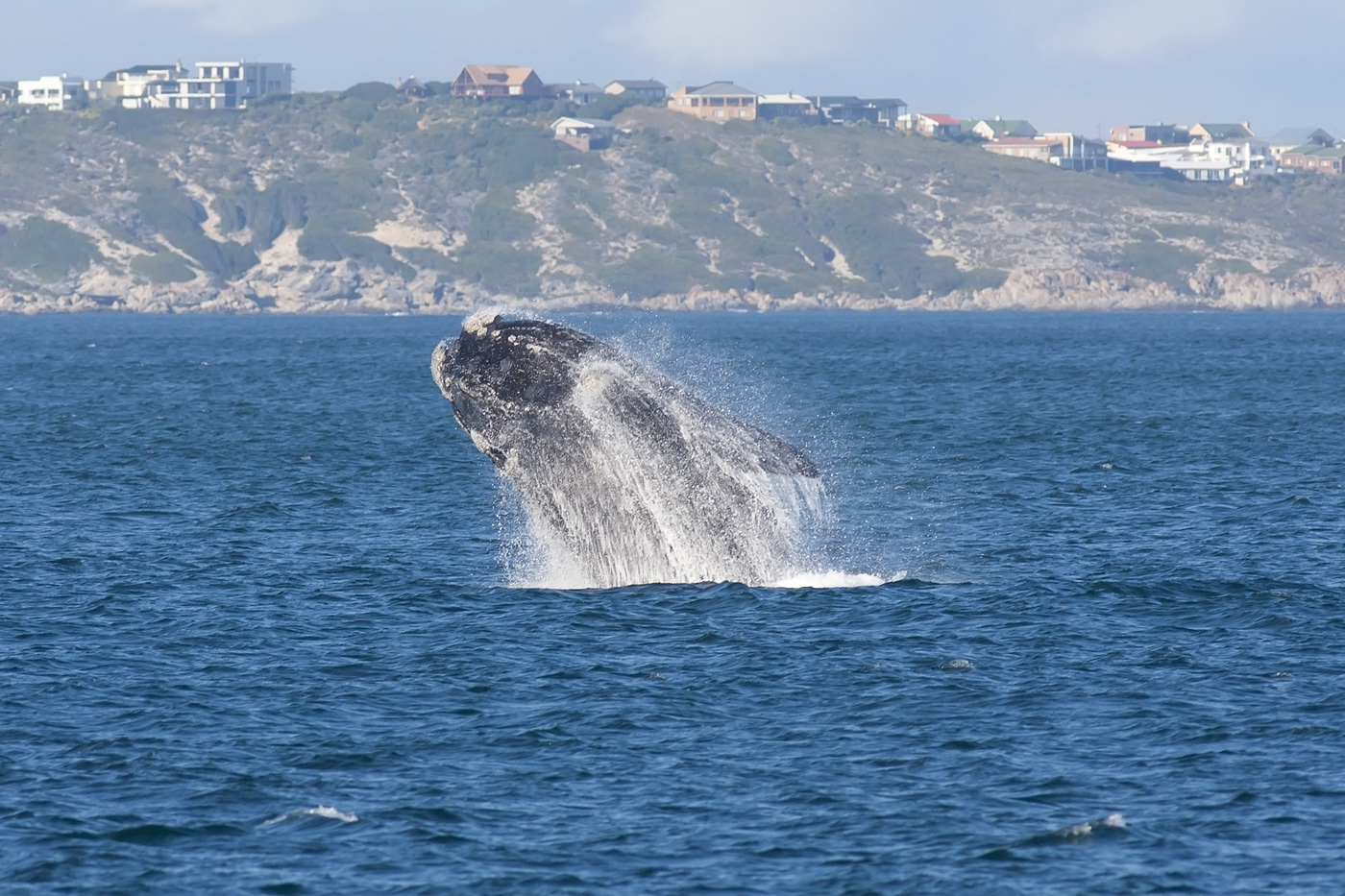
A Southern Right Whale is breaching near the coast of Hermanus, South Africa. Photo © Rob Schleiffert / Flickr Right whales get their name because they were the “right” whale for the whaling industry: relatively easy to find and kill. The industrial-grade targeting of southern right whales that occurred from the mid-19th to early 20th century reduced a population of some 100,000 whales to near extinction.
But whaling prohibitions and enforcement worked. The southern right whale population is now 12,000 animals, and is increasing at a rate of about 7 percent per year. This species migrates each year from Antarctica to various coastlines in the Southern Hemisphere, including the South African Cape.
In particular, they visit a cove by the town of Hermanus to mate and have calves. This allows for arguably the best land-based whale viewing in the world from May through October. You can enjoy lunch or a stroll on the beach while observing plenty of whales breaching nearby. It also allows for incredible viewing of whale behavior; we pulled off the road and spent an hour watching a mother and calf at play (this also led to a dead battery, but that’s another story).
There are boat and kayak tours that allow you to get even closer. The whole town of Hermanus is geared towards whale viewing, and if you aren’t seeing whales, just ask.
-
Meerkats
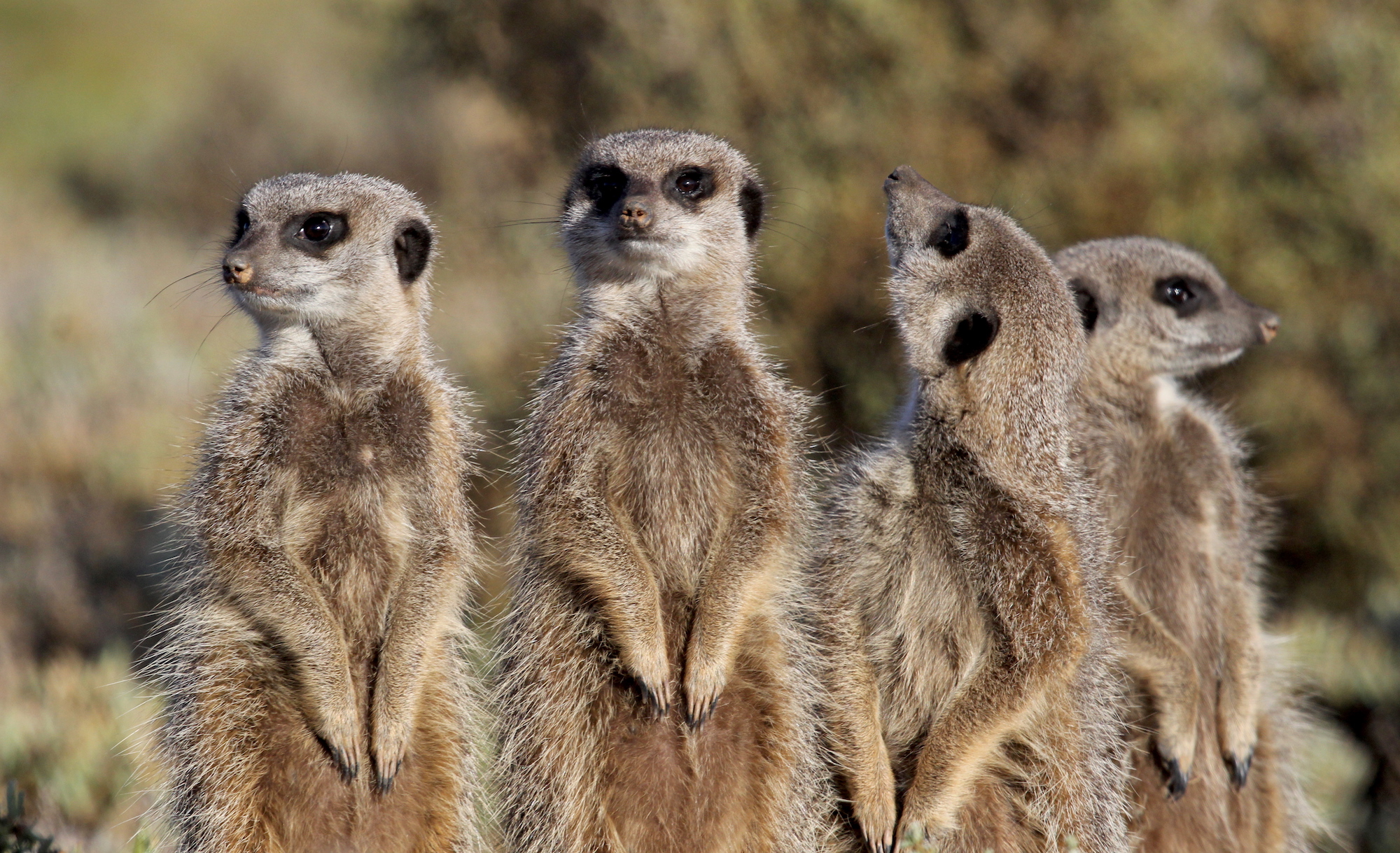
Hello meerkats! Photo © Matt Miller / TNC Some charismatic species are just flat-out more fun to observe than others. Seeing a lion or leopard is always a thrill. But the fact is, the behavior you are most likely to witness is sleeping. But meerkats? Pure entertainment.
These social mongooses are constantly hunting, communicating with each other and exploring. Even when they are warming themselves up in the morning – standing straight up and oriented towards the sun – you can’t help but grin.
You can see meerkats in many national parks and game ranches in desert regions of southern Africa. But private nature reserves near the town of Oudtshoorn, South Africa, have acclimated meerkats to human presence, allowing you close-up views of meerkat behavior. These animals are not fed or tamed; they’re just used to the presence of quiet, observant people. You sit in a lawn chair and watch them wake up, hear their vocalizations and witness their social behavior.
Oudtshoorn is popular on the tourist circuit for its commercial ostrich farms and the Cango Caves, both well worth a visit. But if you’re a wildlife enthusiast, prioritize the meerkats.
-
Fynbos
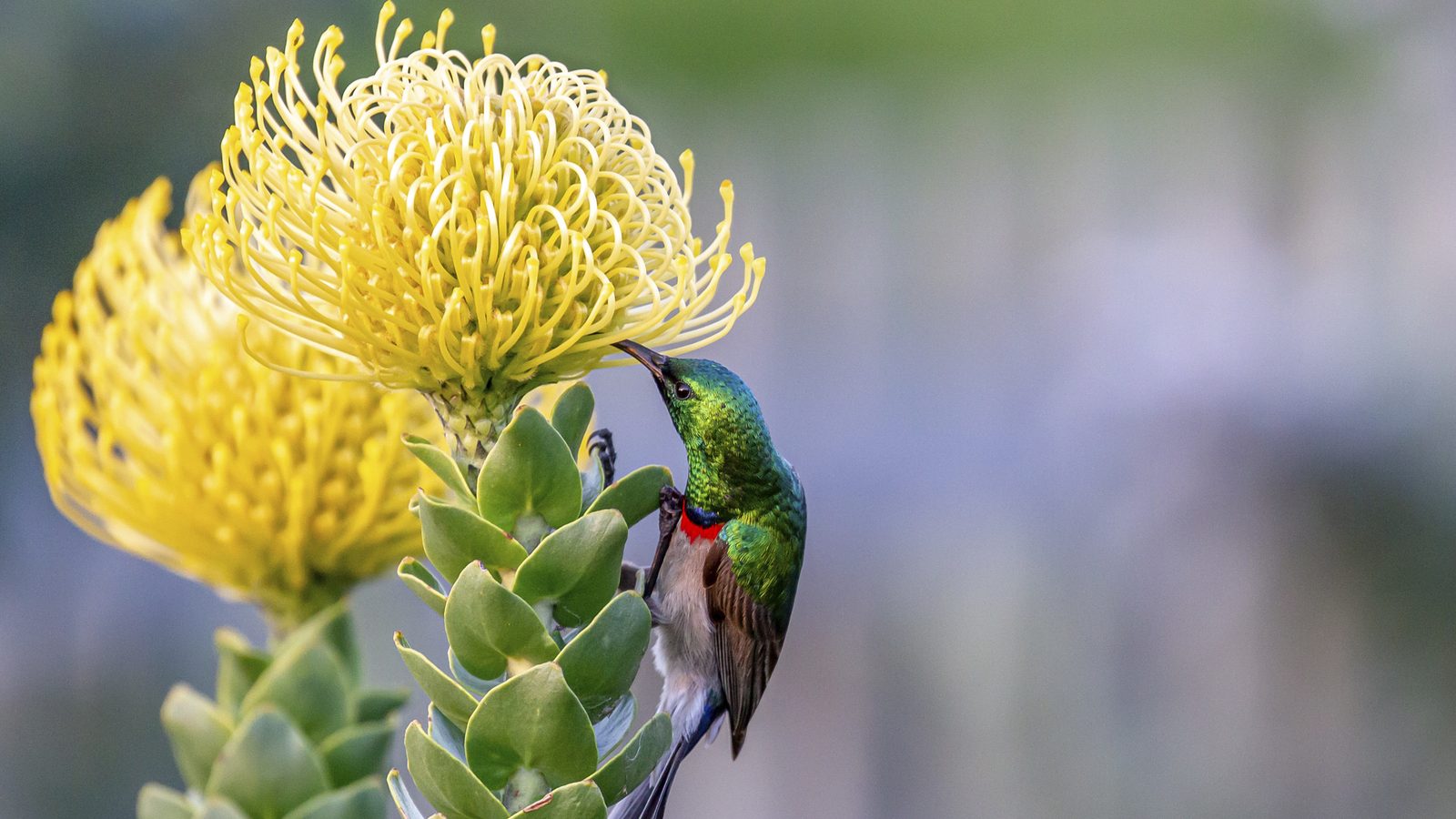
A Southern Double-Collared Sunbird drinking nectar from a pin cushion protea flower. Photo © Gareth Jones / TNC Photo Contest 2019 Walking around Cape nature reserves, you can see a lot of interesting creatures, from leopard tortoises to sunbirds. But it’s often the plants that steal the show. The wildflower blooms are simply spectacular, and the Cape floral region is one of the most botanically diverse areas on earth. The southern tip of Africa contains 3 percent of the world’s plant life, and more than 20 percent of Africa’s. And more than 70 percent of the plants found here are found nowhere else on earth.
Botanically, the area is more diverse than the Amazon,” said Dominic Chadbon, a nature guide and native plant advocate. “There’s no place else quite like it.”
Much of the plant life is fynbos, fine-leaved shrubs. Among the most well-known outside of South Africa are the proteas, with large striking flowers pollinated by birds and other wildlife.
The Cape Town city limits alone are home to 3,250 species of plants, almost twice as many as are found in the entire British Isles. The Cape floral area is recognized as a World Heritage site, and is protected by a number of fine nature reserves. But these native plants also face a major threat in the form of invasive species.
Invasive species not only threaten plant diversity, they use more water in a region suffering from drought. The Nature Conservancy is working to control invasives and protect watersheds, providing local jobs in the process.
You can enjoy the fynbos at some of the most popular Cape Town tourist attractions, including Table Mountain National Park and the Kirstenbosch Botanical Gardens. Cape Nature’s many reserves offer opportunities to see a variety of wildflowers. Fernkloof Nature Reserve offers excellent self-guided hiking trails and beautiful views, and excellent interpretive signs for the unique plant life.
-
Birding

A southern black korhaan, a type of bustard. Photo © Matt Miller / TNC The Cape floral region’s unique flowers also provide habitat for endemic birds: six species are found nowhere else on earth. The Cape sugarbird and orange-breasted sunbird both pollinate fynbos, and can be easily seen in many Cape nature reserves, especially when plants are flowering in August and September.
The other endemics can require more serious searching, but fortunately the Cape is well-served by birding tours and local clubs that provide excellent information. Many tours combine the Cape with a “classic” safari destination like Kruger National Park, allowing you to see both endemic birds and megafauna on one trip.
While watching whales or sharks along the coast, you should also look for a variety of interesting species including the African black oystercatcher, Cape gannet and Cape cormorant. Pelagic tours will bring you close to huge flocks of seabirds, including albatrosses and petrels. Rondevlei Nature Reserve is a great place to see wetland species including the common moorhen, African swamphen and several duck species. West Coast National Park is great for flamingos, black korhaan and shorebirds. Any national park, garden or beach provides opportunities for new species, so keep those binoculars and field guides with you.
-
Awesome Ungulates
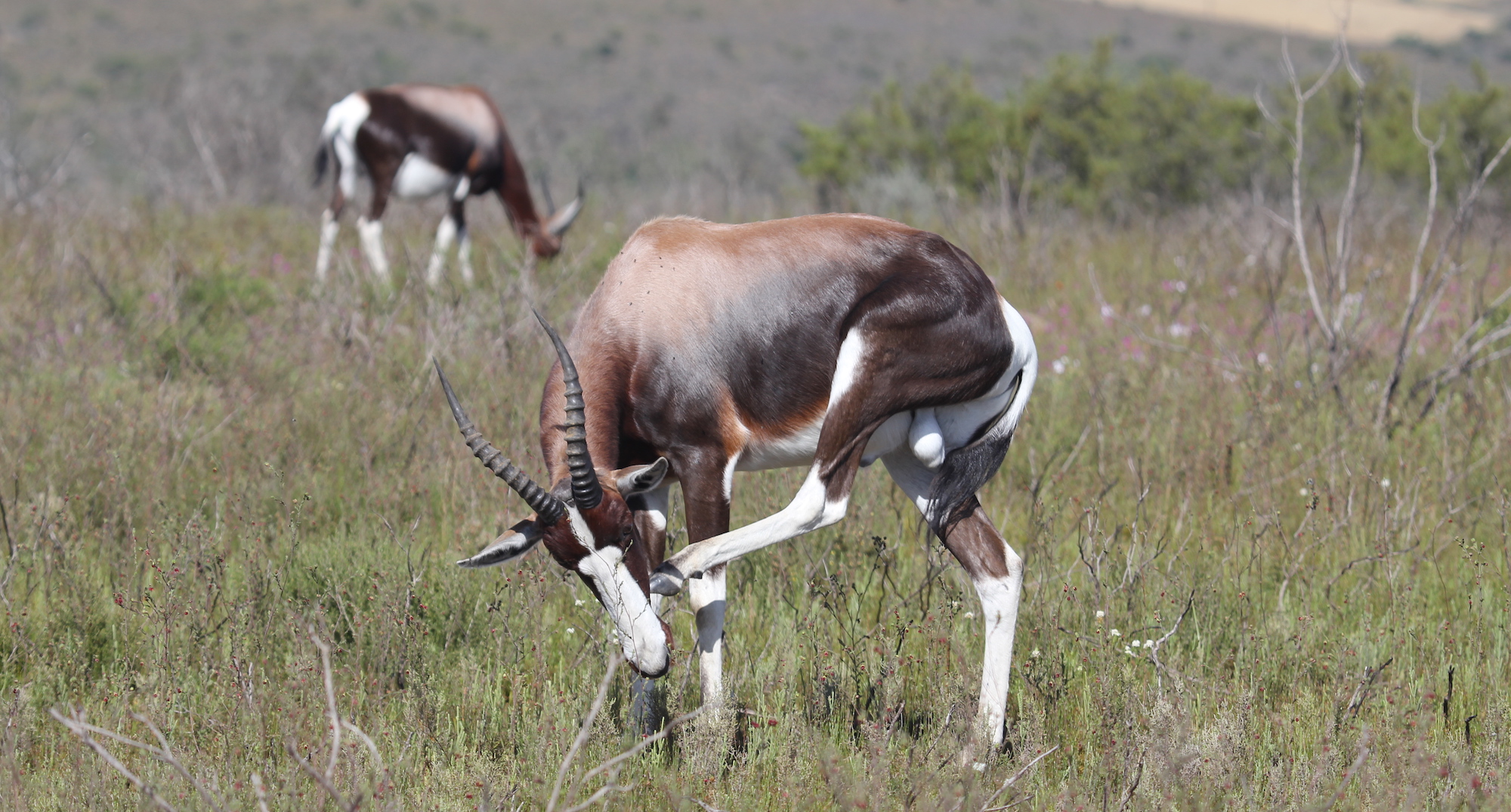
An adult bontebok. Photo ©Matt Miller/TNC The great herds were eliminated fairly quickly in South Africa. The blaubok, an antelope, and quagga, a subspecies of zebra, were the first large mammals eliminated from the continent in modern times. The days of the massive migrations are over, but fortunately conservation efforts have restored some interesting species of hoofed mammals.
Bontebok populations were once reduced to 17 animals. The remaining herd was located on a farm, and because the species can’t jump fences, they were prevented from wandering into poachers. Today, you can see herds of this species on a number of reserves, including the aptly named Bontebok National Park. This small park is also a great place to see other South African mammal specialties, including Cape mountain zebra and rhebok.
Many private reserves and game ranches have restocked their land with large mammals. This is a great conservation success. Sometimes, though, the ranches have stocked non-native mammals as well. West Coast National Park, the Cape of Good Hope Nature Reserve, Karoo National Park and other public reserves offer the chance to see a variety of hoofed mammals including eland, steenbok, Cape grysbok and others. You may also spot small predators like caracal and Cape fox. There is even an effort to bring back a zebra that looks like the quagga through selective breeding.
One of the great things about these reserves, unlike many African national parks, is that you can explore on your own. Roads are generally excellent in South Africa, and you can easily rent a car. Many of the parks in the Cape region have hiking trails. Spotting wildlife is always fun, but it’s even more fun when you see large mammals on your own.
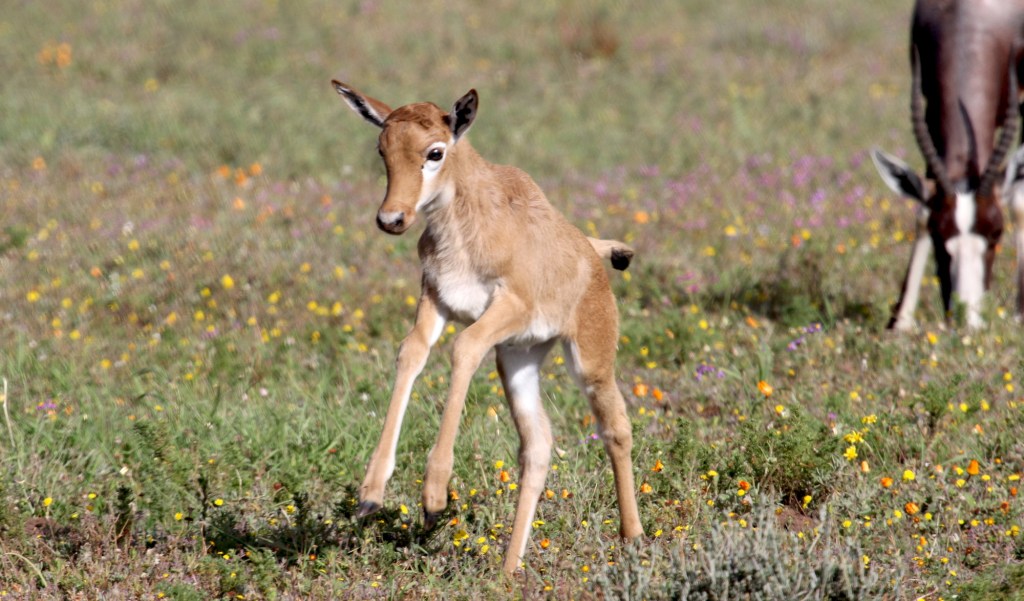



Thank you for sharing these beautiful pictures of wildlife – birds and the Bontebok. I love our wildlife–and it is heartbreaking how many have become extinct because of our careless, senseless and irresponsible mistreatment of the natural life of our planet.
Aaah, thank you for making me homesick today 🙂 I grew up in the Cape and had a family who loved the outdoors, so I have seen all these things – although sharks only from above the water. In fact, the penguins returned while I was living there, and I got to see them care of a friend’s holiday house a few minutes walk from the beach. Very pretty part of the world, and there are guided tours for all of it.